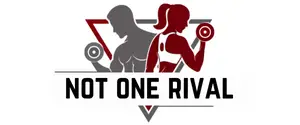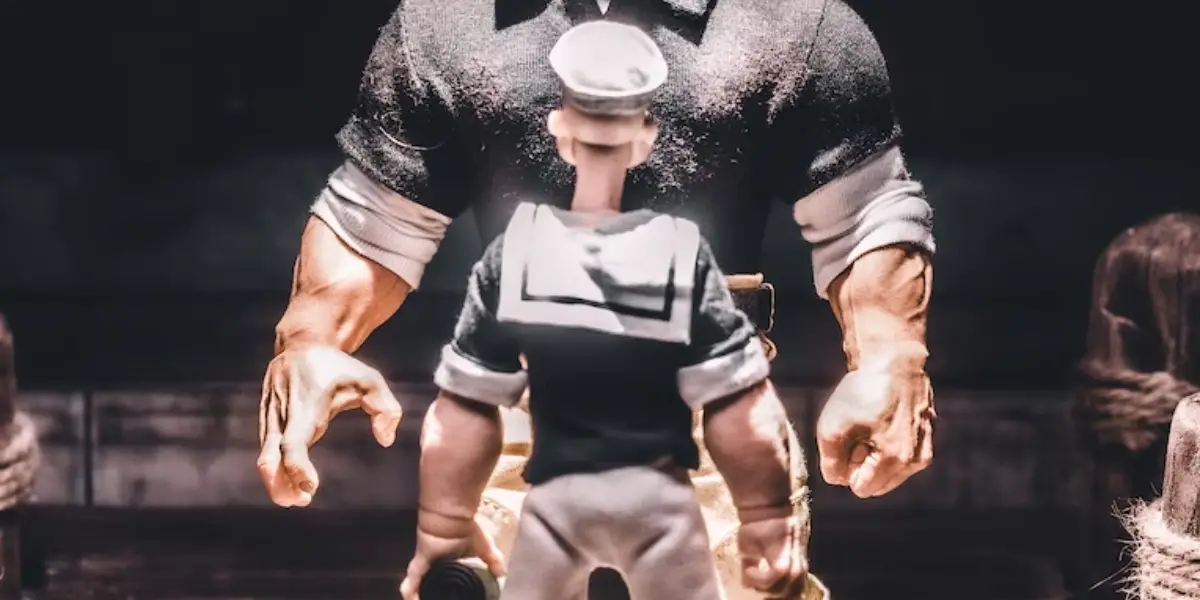Big Forearms Small Biceps
Disproportionate arms is a deeply embedded fear in the minds of prospective and even veteran weightlifters. It’s not just arms either. Hugh Jackman was relentlessly mocked for skipping “legs” the day after he released a picture with ripped arms and two stick legs in jeans.
The reason your forearms are looking shredded while your biceps are hanging back is that you’re working your forearms harder. Whether you are doing so by accident or you enjoy working your forearms intensely, it makes a difference.
There are some other factors worth considering as well. It really takes a nearly perfect set of circumstances to end up with jacked forearms and smaller biceps. At the same time, it’s also pretty simple.
Why are Your Forearms Bigger than Your Biceps?
For the most part, the problem is something you can control. If you prefer to get rid of your Popeye the Sailorman arms and start bulking your biceps, there are some things you need to change. There are also some things you can do to fix it (more on that below).
Change Your Focus When You’re Lifting
You may not notice it much, but your grip, whenever you are doing curls or hammer curls, and how you work your forearms and biceps matters. When you curl, how hard are you gripping the bar? Do you curl your forearms when you bring the bar up?
Do you concentrate on flexing your forearms as you lift?
Those three questions are key. If you do those things, you are working your forearms and oftentimes, you are working them enough that the potential is there for them to get larger, possibly larger than your biceps.
You’re Not Training Your Biceps
Most who are new to weight training have no idea how important mentality is in the gym. When you curl, you need to focus on your biceps. You must make sure you are contracting them at the top while keeping tension.
You’ll want to control the weight on its way down to increase time under tension as well. Control the weight throughout the movement.
Don’t swing weights will performing bicep exercises. Lock your elbows into your side. Control through the exercise. Lower the weights in a slow and controlled manner.
Bicep isolation exercises are probably not something you’ve engaged in very often and you lack the mind-body connection necessary to truly unleash the potential in your biceps, rather
Work and Play Life
What you do for a living matters. And what you do on your own time matters as well.
- Do you like to climb?
- Does your work require you to use your forearms extensively?
Gripping and carrying things work your forearms, whether you like it or not.
Blame Your Parents and Grandparents
Sometimes, it’s just not your fault. Have you ever noticed whether your dad, mom, grandma, or grandpa had decent size forearms? Or maybe they don’t but that could be because they don’t lift. That doesn’t mean that the genes aren’t there or that they didn’t pass on to you.
Do Forearms Grow with Biceps?
This is an unfortunate fact, even if you change your focus to purely biceps. The curling motion can’t help but work your forearms to some degree. The bas to be gripped when you lift after all, and the strength of your grip comes from your forearms.
Fortunately, there are some exercises you can do that reduce the role of the forearms, but nothing will ever eliminate them from the equation entirely. If you’re gripping the bar, you are working your forearms to a degree.
However, it’s important to realize that you probably don’t need to grip the bar all that hard.
Why Won’t My Biceps Grow?
You’re overtraining the. which wouldn’t make a whole lot of sense because it would affect your forearms as well, or you lack variety in your workout routine. For the most part, you shouldn’t work the same muscle group more than three times a week.
Some weightlifters won’t work smaller muscle groups, like the biceps, more than twice a week. Smaller muscles need more time for your body to repair than larger muscles. Every pulling motion that requires you to close your elbow is working your biceps.
If you work your biceps a lot on the job, do a lot of pull-ups, pulldowns, inverted rows, barbell rows, and anything similar, you’re working your biceps. This should help them grow assuming you are consistent with your workouts and nutrition.
7 Ways to Balance Big Forearms and Small Biceps
Fortunately, there are ways to fix the issue. It’s undeniable that when you flex and your forearms are noticeably larger than your biceps, it looks a little strange. When it comes to bodybuilding, image is vastly important since it fuels mentality.
On Arm Day, Start with Your Biceps
If you want your biceps to overtake your forearms, one of the first things you should do is start making your biceps the focal point of your workout, to the point where it’s the first thing you do when you hit the gym.
Since it’s arm day, your triceps play an important role as well. They help to round out the upper arm. But the biceps come first. The logic lies in the fact that you aren’t suffering from fatigue and exhaustion when you get started.
Your biceps get you when you are at your most energetic. As with everything in weightlifting, your mental energy is important as well. Your mental energy and enthusiasm to correct the imbalance should be at its peak.
You need that untapped energy. enthusiasm, and focus. It’s one of those elements of a proper workout that newbies often take the longest to grasp.
Lay Off the Forearm Workouts
If you are doing forearm workouts, it’s time to cut back on them. You may want to drop them to a single exercise on a workout day. Only you can truly understand how your own body works and you should know by now what’s been working for you in the past, in terms of building your forearms.
Remember that your forearms get plenty of work on arm day even if you don’t do any isolation exercises for them. As we stated above, anytime you grip the bar, your forearms come into play. Reducing focus on the forearms will help your biceps catch up.
Don’t neglect them entirely but work on some different routines—try and change things up a little bit—enough to reduce the workload on your forearms and redirect the focus toward your biceps.
Mind Over Matter
We’ve probably mentioned it about a hundred times, up above, but any veteran weightlifter will tell you that the mind is an immensely powerful tool when you’re building your body. Focus on your biceps when you lift.
Imagine the muscle straining, pumping, growing, and flexing. Imagine the blood flowing into the tissue. Get angry, then focus that rage into the muscle.
Build. Grow. Work. It’s just that simple.
The power of the mind is an invaluable tool and if you learn to focus it, you’ll have a leg up on the weightlifters around.
Embrace Isolation Training
You can never truly 100% isolate a muscle but you can come close to isolating your biceps. For instance, when you do a basic exercise, such as curls, you should imagine that your arms end at the elbow.
Everything from the elbow to the bar is nothing more than mental with a hook on the end to hold the bar as you curl it.
Eliminate your forearms from your mind.
The goal is to complete your sets, slow and controlled (and with the right amount of weight). Focus on the up and down movement through each rep.
When you go through your curling motion, try not to use your forearms at all, which is the reason you should imagine hooks instead of forearms. Don’t flex your forearms and don’t curl your wrists in.
Relax Your Grip
Keep your grip on the bar relaxed. As we mentioned above, you probably don’t even realize how hard you are gripping the bar when you lift. You can relax the tightness of your grip to a point where you can manage the weight without dropping it on the floor.
Your Triceps are Important as Well
There’s a reason we mentioned triceps above. Arm day should obviously focus on both your biceps and triceps, and you shouldn’t neglect the latter in favor of the former. Building your triceps gives your upper arms a more well-rounded appearance.
Even if your biceps aren’t up to spec yet, growing triceps will help offset the odd look of having forearms larger than your biceps.
Three Sets of Eight to Ten
Some people talk about four and maybe even five sets but remember, biceps are a small muscle group, and overworking them is far too easy. Three sets of eight reps is a good start and it’s designed to get the best out of the workout.
It’s enough to work the muscle and break it down but not so much that a protein-rich diet won’t build it back up.
All Things Considered About Big Forearms Small Biceps?
It’s not as hard as you think to end up with your forearms larger than your biceps. Even if it’s very close to the same size, it may look odd, especially if you have longer arms. You can combat this with the seven steps listed above.
Don’t forget the importance of mentality and the will to get up each day and make your way to the gym and get those forearms back under control.
FAQ
References and Citations
Editors, M. F. (2015, April 24). Ask Jay Cutler: Why are big forearms a benefit in the gym? Muscle & Fitness. Retrieved December 4, 2022, from https://www.muscleandfitness.com/flexonline/training/ask-jay-cutler-why-are-big-forearms-benefit-gym/#:~:text=Strong%20forearms%20translate%20to%20stronger,to%20train%20other%20body%20parts.
How to get bigger forearms with a few simple exercises. ISSA. (n.d.). Retrieved December 4, 2022, from https://www.issaonline.com/blog/post/how-to-get-bigger-forearms-with-a-few-simple-exercises
- 5 Best Power Towers For Your Home Gym - July 19, 2023
- What Does Natty Mean in Body Building? Is It Good or Bad? - June 26, 2023
- How Much Creatine Is In Bang? The Amount Might Surprise You - June 25, 2023

